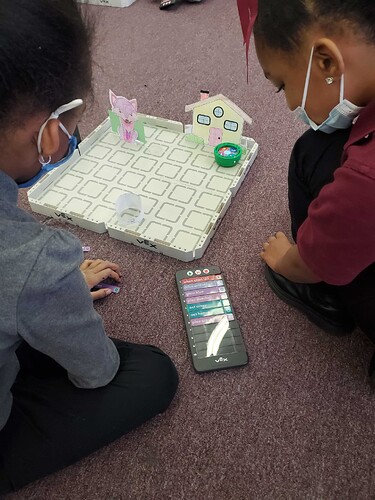At the close of the last class before winter break, @Jessica_Drayer and I asked the 2nd graders “What is something you learned or liked about the 123 Robot today?” The students had just concluded the ‘Dragon in the Village’ Activity Series, and successfully built a ‘dragon pushing robot’ and coded it to push the dragon out of the village, so many answers centered around finally getting rid of that pesky dragon!
However, here were some of my other favorite answers:
-
“My part that I LOVED is the coding!”, as she held up her Coder project with pride.
-
“I liked the thinking. Because if you don’t think it through, it won’t work!”
-
“I liked the making part. We had to try a lot of times.” from a student who iterated on the dragon pushing attachment with his partner MANY times that day.
-
“I loved getting to work with [my partners] to build it and code it together.”
Such a simple question to ask, but it can yield really meaningful comments from students. What are some reactions, or things that your students have said that they’ve learned or liked about working with robots?
2 Likes
@Audra_Selkowitz @Jessica_Drayer It’s so exciting when students are realizing the rewards of their persistence and iteration as well as experiencing the satisfaction of successfully working with others! What a great pre-winter break experience for the students!
@Audra_Selkowitz : Loved these quotes!
Some of my favorite parts of this lesson was the authentic teamwork and resilience students exhibited! These were engaged in a fun “real-world” problem that they had to collaborate, design, test, redesign, retest.
As an educator, I’m always reflecting on the “When are we ever going to use this?” question. This lesson was a perfect example of providing opportunity to learn many skills they will need to use their entire lives!
@Jessica_Drayer shared some great images and stories about her 2nd graders first foray into using the Eye Sensor on the 123 Robot last week! They compared and contrasted how the robot ‘sees’ with how they can see, and worked on the Little Red Robot STEM Lab. The kids were intrigued and very curious about how the robot could ‘detect’ Grandma’s House AND the Wolf, but that it didn’t know the difference!
It’s a great opportunity to talk about the student’s agency in coding - while the robot has a ‘brain’, it’s the student, as the coder, has to tell it essentially how to use its brain (to put it into elementary words), and what to do with the information it sees.
@Jessica_Drayer I’m sure there are more good quotes you can add in here. I’m curious to see how much they process between classes about the eye sensor!
@Anna_Blake I’m sure you’ve had some great experiences with students having A-Ha! moments around sensors and their agency in coding. Feel free to share 
@Audra_Selkowitz : 2nd graders were so excited to see that they had to ‘control’ the robot. Even though the robot could ‘see’ the object and know to stop, they still had to tell the robot what to do. I loved that one girl told me, “People are still smarter than robots.” Not only did this open the students’ eyes to the ability of a robot sensor, as well as it’s shortcoming, it truly showed at a wonderful level how the coder (person) is still needed to tell the robot how to use it’s brain.
The first graders had a great ah-ha about the efficiency of coding. One girl had noticed that when we coded with "Drive 2’ vs a ‘Drive 1, Drive’ that “It’s faster because it doesn’t have to stop and think and it keeps driving for the 2, and will get there faster.” When we introduced the sensor coding card, another 1st grade student made the hypothesis that with only one card: “Making the robot go faster with the new card.” This created the teachable moment to be able to talk about streamlining coding programs and how that helps robot/programs/games run faster and smoother.
The computational thinking and computer science reasoning that these 1st and 2nd graders are doing by playing Red Riding Robot is astonishing!
1 Like

